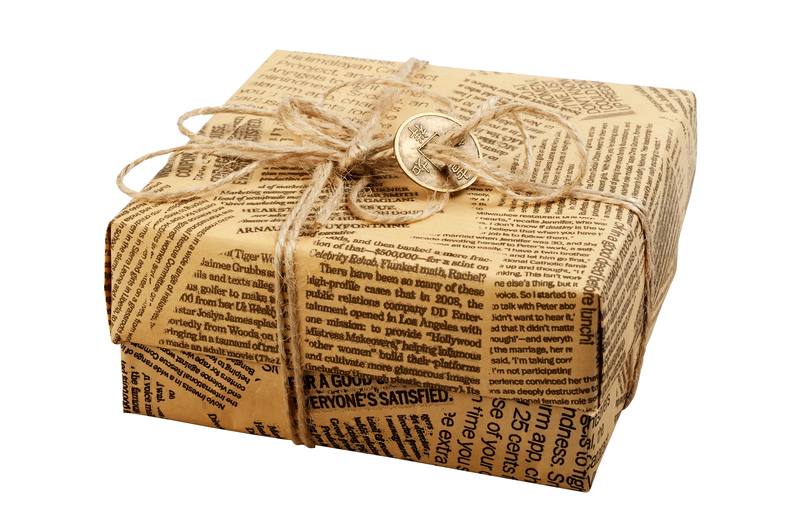A Guide to Eco-Friendly Disposal of Kitchen Pots and Pans
Every kitchen, over the years, accumulates a collection of pots and pans that ultimately outlive their usefulness. Whether it's scratched-up nonstick skillets, dented saucepans, or warped woks, the big question arises: How should you dispose of old kitchen pots and pans responsibly? Throwing them in the general trash isn't the answer. Instead, there are a range of eco-friendly disposal methods that are much kinder to our environment. This comprehensive guide will walk you through sustainable options for disposing kitchen cookware, providing practical tips to make your home greener.
Why Eco-Friendly Disposal of Kitchen Pots and Pans Matters
Modern cookware is often made from a mix of metals, plastics, and chemical coatings, many of which can be toxic or non-biodegradable if dumped in landfills. Improper disposal of kitchen pots and pans:
- Wastes valuable resources that could be recycled or repurposed
- Pollutes landfills with heavy metals, chemicals, and non-recyclable plastics
- Contributes to environmental degradation and greenhouse gas releases
Adopting eco-friendly cookware disposal methods helps conserve natural resources, reduce waste, and protect our planet for future generations. Let's dive into the best green methods for handling unwanted kitchen pots and pans.

1. Assessing the Condition of Pots and Pans
Not all cookware is meant for the landfill or recycling center. Before you decide how to dispose of your old pots and pans, consider their current state:
- Gently used: Minimal scratches, no rust or major dents
- Damaged but fixable: Handles missing, loose parts, minor warping
- Truly worn-out: Deep scratches, significant warps, broken or rusted parts, non-functional
First step: If the pot or pan is still usable, donation or repurposing is far better than disposal. Otherwise, read on for recycling and upcycling options.
2. Donate Usable Kitchen Pots and Pans
Local Charities and Nonprofits
If your cookware is still in decent shape, donating is the most sustainable way to extend its life. Many local charities and non-profits accept gently used kitchenware. Look out for:
- Thrift stores (Goodwill, Salvation Army, local shops)
- Homeless shelters and transitional programs
- Community kitchens or food pantries
- Schools or church groups
Call ahead to confirm they'll accept cookware donations, as some organizations can only take certain types or materials.
Online Community Platforms
- Freecycle: Post your items online for neighbors to claim and reuse.
- Facebook Marketplace and Buy Nothing groups are great for offering free or low-cost kitchen items locally.
Not only do you reduce kitchen waste, but you also help someone in need outfit their home sustainably.
3. Sell Pots and Pans That Still Have Life
If your pots and pans are branded, high-quality, or in particularly good shape, you can recoup some value by selling them.
- Online marketplaces: eBay, Craigslist, Facebook Marketplace
- Garage sales: Group old kitchenware with other household items
- Consignment shops: Some secondhand stores accept quality cookware brands
Give your cookware a second chance with someone who will appreciate it--keeping it out of landfill while making a few extra dollars.
4. Recycle Old Kitchen Pots and Pans
Which Kitchen Cookware Can Be Recycled?
Most metal pots and pans can be recycled, though the process and requirements vary by location. Typical recyclable materials include:
- Stainless steel
- Aluminum
- Copper
- Cast iron
Nonstick pans pose a challenge as coatings may not be recyclable. Similarly, pots with silicone handles or plastic parts likely need to be separated before recycling.
How To Prepare Cookware for Recycling
- Remove all non-metal parts such as plastic handles, knobs, glass lids, or silicone grips.
- Clean excess food or grease from the pan
- If possible, separate metal types--like removing aluminum rivets from cast iron pans.
Drop-Off Points for Recycling
- Municipal recycling centers: Many facilities accept scrap metal, but check guidelines first.
- Household hazardous waste events: Sometimes, cookware is accepted with other hard-to-recycle items.
- Scrap metal yards: These facilities pay by weight for most metals--even for pots and pans with defects.
Never place pots or pans in curbside single-stream recycling bins unless your provider specifically allows it. Metal cookware can damage sorting equipment.
5. Creative Upcycling and Repurposing
For pots and pans too damaged for use or recycling, upcycling offers a fun, eco-friendly alternative. Here are some creative ways to give old cookware a second life:
- Planters: Drill a few holes in the base of a saucepan, fill with soil, and plant herbs or flowers.
- Birdbaths or birdfeeders: Sturdy pans and woks make unique garden features for wildlife.
- Wall art or clocks: Artistic types can use lids or pans as canvases or create functional wall clocks.
- Storage containers: Old pots make quirky storage for utensils, craft supplies, or garden tools.
- Lampshades: With a bit of creativity and some basic tools, a stainless steel colander can be transformed into a light fixture.
By repurposing kitchen cookware, you reduce waste while bringing unique charm to your living space or garden.
6. Specialized Drop-Off Programs
Some cookware brands and retail chains now offer takeback and recycling programs for old cookware. These specialized initiatives ensure pots and pans are responsibly processed.
- GreenPan Recycle Program: Recycle old nonstick pans through select mail-in programs.
- Local kitchenware stores: Ask if they have in-store recycling or trade-in promotions for old cookware.
- Manufacturer recycling: Contact brands like Tefal, Calphalon, and Le Creuset--some offer eco-friendly disposal assistance.
These programs are particularly useful for nonstick pans that mainstream scrap yards may not accept due to chemical coatings.
7. Safe Disposal of Specialty Materials
Dealing with Teflon and Nonstick Cookware
Nonstick cookware, often coated with polytetrafluoroethylene (PTFE or Teflon), can be tricky to recycle because local centers may not process them. Never place Teflon-coated pans in curbside recycling bins. Instead:
- Call your local recycling center or public works office for special instructions
- Look for manufacturer takeback programs in your area
- If no recycling route is available, dispose of them in household waste as a last resort, while making plans to avoid nonstick in the future
Glass Lids and Handles
Most tempered glass lids and plastic handles cannot be recycled in curbside programs. However, scrap yards may remove and recycle metal handles, while glass or plastic should generally go in the trash unless your municipality offers alternative recycling.
Cast Iron and Specialty Metals
Cast iron pans are highly prized by scrap metal dealers. Even heavily rusted or cracked pans can be melted down for reuse, so take them to a dedicated scrap yard. You might even find collectors or tinkerers who restore vintage cast iron for resale.
8. Reducing Kitchen Waste in the Future
Choosing sustainable cookware and adopting mindful habits can greatly reduce the environmental impact of your kitchen.
Tips for a Greener Kitchen
- Choose durable, repairable cookware like stainless steel, cast iron, or copper that lasts for decades.
- Avoid cheap nonstick pans that wear out quickly and release toxic chemicals.
- Maintain and repair: Tighten handles, reseason cast iron, and avoid overheating nonstick coatings.
- Buy secondhand when possible--quality used cookware is both affordable and eco-friendly.
- Participate in recycling programs offered by manufacturers or local retailers.
By planning ahead and investing in quality cookware, you'll have less to dispose of over time--and you'll save money in the long run.

Frequently Asked Questions About Eco-Friendly Cookware Disposal
Can I put old pots and pans in the regular recycling bin?
No. Most local curbside recycling programs do not accept kitchen cookware because metals are processed separately, and additional parts like plastic handles or chemical coatings pose contamination issues. Take them to a local scrap yard or special recycling center instead.
How do I know if my old pans are too damaged for donation?
If the pan has deep scratches, warping, or flaking coatings (especially nonstick), it's best to recycle or upcycle rather than donate. Donated cookware should be safe, clean, and functional for the next owner.
Are there eco-friendly options for nonstick pan disposal?
Yes, but options are limited. Some brands or dedicated recycling centers accept Teflon-coated pans. Check manufacturer websites or contact your municipal recycling center for guidance. Otherwise, focus on replacing nonstick with safer, more sustainable options in the future.
Can I compost wooden handles or utensils?
If your cookware has untreated wooden handles or utensils, you can compost them in many municipal or backyard systems. However, ensure they're free from varnish, paint, or chemicals first.
Conclusion: Make Eco-Friendly Choices for a Greener Kitchen
Properly disposing of kitchen pots and pans is about more than just decluttering--it's about embracing environmental responsibility. By donating, recycling, or creatively repurposing cookware, you can significantly reduce your household's environmental impact. Whenever possible, choose durable products that last a lifetime, and support brands and programs committed to sustainability. Every eco-friendly action in your kitchen brings us one step closer to a cleaner planet.
With this guide to the eco-friendly disposal of kitchen pots and pans, your culinary cleanup can be as green as your recipes!
